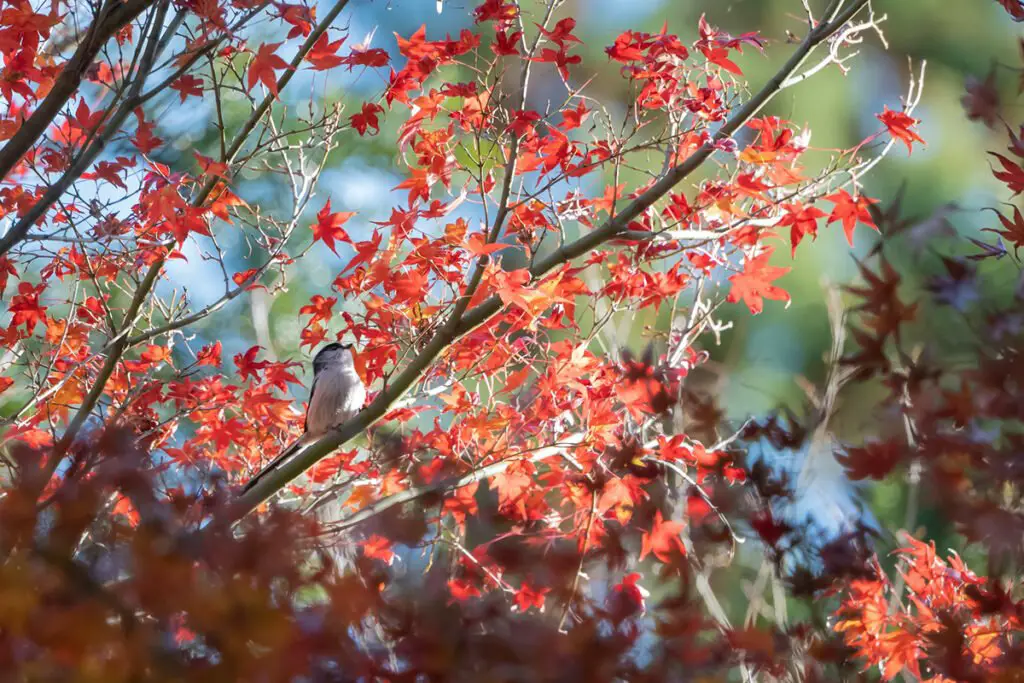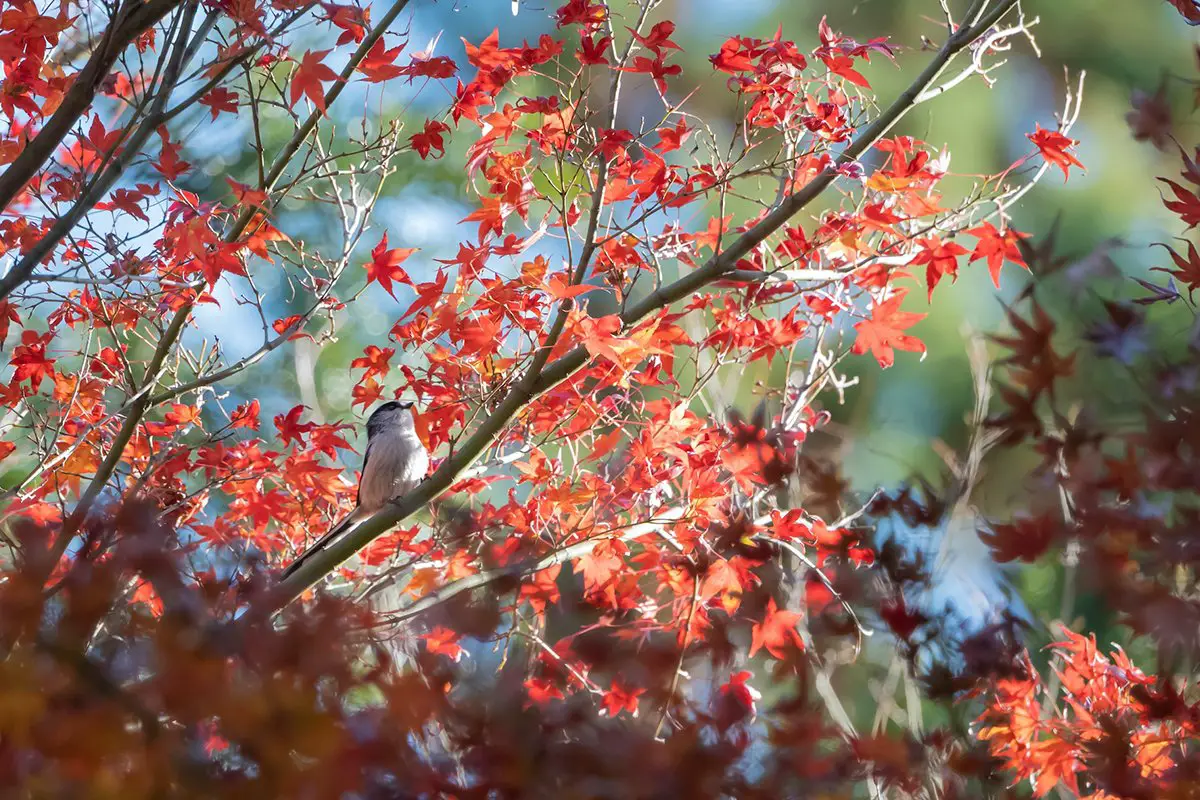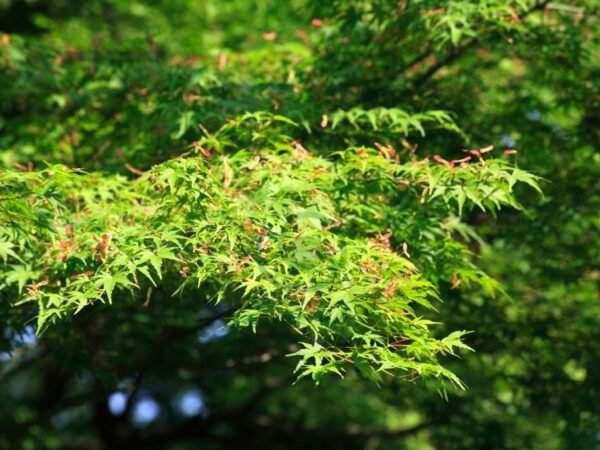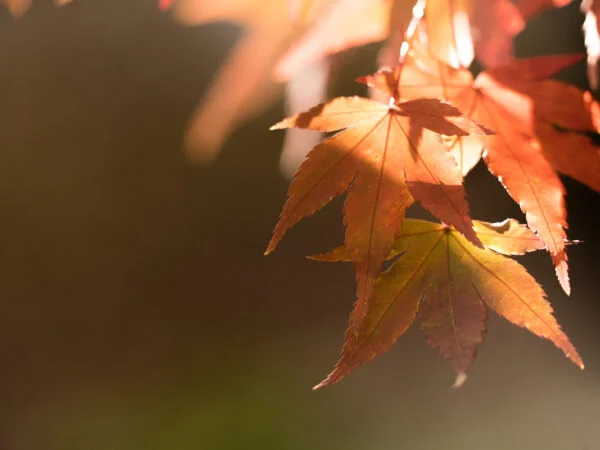Maple trees, with their stunning foliage and majestic presence, are a cherished addition to any landscape. But have you ever wondered how to keep them looking their best? Fertilization is the key! Properly fertilizing maple trees not only promotes their overall health and growth but also enhances their beauty in your outdoor space. By providing essential nutrients and organic materials, you can ensure that your maple trees thrive.

Fertilizing maple trees involves understanding their nutritional needs and testing the soil's pH level. This helps determine the right type of fertilizer and application method for optimal results. Whether you choose organic products or spikes specifically designed for maple varieties, applying them in the root zone or near the base of branches yields excellent outcomes.
Get ready to discover the best way to nourish your maple trees and enjoy a vibrant landscape filled with healthy, flourishing maples!
Best Time to Fertilize Maple Trees
Understanding the seasonal timing for optimal fertilizer application on maple trees is crucial to ensure their healthy growth and vibrant foliage. Proper fertilization provides essential nutrients that support the tree's overall health, root development, and resistance to diseases and pests. However, determining the best time to fertilize maple trees depends on several factors.
Factors to consider when determining the best time to fertilize maple trees:
- Late Fall: Fertilizing maple trees in late fall is generally recommended because it allows them to absorb nutrients before entering dormancy. During this period, the tree focuses its energy on root development rather than leaf production. Applying fertilizer at this time helps replenish essential nutrients, promoting strong root growth during winter months.
- Early Spring: Another suitable time for fertilizing maple trees is early spring, just before new growth begins. As temperatures rise and sap starts flowing again, providing proper nourishment through fertilizer ensures a healthy start for the growing season. Early spring fertilization supports bud formation and encourages vigorous foliage development.
It's important to note that while these are general guidelines, specific tree species and local climate conditions may influence the ideal timing for fertilization.
The importance of following a specific schedule for fertilizing maple trees:
Establishing a regular schedule for fertilizing your maple trees is vital for their long-term health and vitality. Consistency ensures that they receive a steady supply of essential nutrients throughout the year, which aids in their overall growth and resilience against stressors such as extreme weather conditions or pest infestations.
By adhering to a specific schedule:
- You provide consistent nourishment that promotes even growth.
- You avoid over-fertilization or under-fertilization by following recommended dosage instructions.
- You reduce the risk of nutrient deficiencies that can lead to weakened trees or susceptibility to diseases.
- You maintain an optimal balance between root development and foliage growth.
Read More:
- How Fast Does a Maple Tree Grow? Growth Rate & Full Size
- How to Prune a Japanese Maple Tree: Tips and Timing
- How to Trim a Maple Tree: Expert Techniques & Timing
Proper Care for Maple Trees
Maple trees are a stunning addition to any landscape, but they require proper care to thrive and stay healthy. By implementing essential care practices, you can ensure the well-being of your maple trees for years to come.
Watering Techniques
Attention must be paid to provide adequate moisture without overwatering. Maples prefer moist but well-drained soil conditions. Here are some watering tips:
- Deep Watering: Instead of frequent shallow waterings, deeply water the tree once a week during dry spells. This encourages deep root growth and helps the tree withstand drought conditions.
- Slow Soaking: Use a soaker hose or drip irrigation system to deliver water directly to the tree's root zone. This ensures efficient water absorption and minimizes evaporation.
- Mulch Retention: Apply a layer of organic mulch around the base of the tree to retain moisture and regulate soil temperature.
Pruning Techniques
Pruning is an essential practice that promotes healthy growth and maintains an attractive canopy shape for maple trees. When pruning maples:
- Timing: Prune maples during late winter or early spring before new growth begins.
- Selective Pruning: Use bypass hand pruners to remove dead or diseased branches by making clean cuts just above a bud or lateral branch junction.
- Canopy Maintenance: Maintain an open canopy structure by removing crossing branches or those growing towards the center of the tree.
Remember that excessive pruning can harm maple trees, so it's important not to go overboard with your trimming efforts.
Mulching Techniques
Mulching offers numerous benefits for maple trees as it conserves moisture, suppresses weeds, and regulates soil temperature. Follow these mulching techniques for optimal results:
- Mulch Depth: Apply a layer of organic mulch, such as wood chips or shredded bark, 2-4 inches deep around the base of the tree. Avoid piling mulch against the trunk to prevent moisture-related issues.
- Mulch Area: Extend the mulch layer to cover the entire root zone area, which typically extends out to the dripline of the tree.
- Mulch Renewal: Replenish the mulch annually to maintain its effectiveness and appearance.
Sunlight Exposure
Maple trees thrive in partial shade or full sunlight conditions. Consider these factors regarding sunlight exposure:
- Ideal Conditions: Maples prefer dappled shade or filtered sunlight for a significant portion of the day.
- Avoid Excessive Shade: While some shade is beneficial, excessive shade can lead to poor growth and weak branches.
- Consider Surroundings: Take note of nearby structures or trees that may cast shadows on your maple tree and adjust accordingly.
By providing adequate sunlight exposure, you ensure that your maple trees receive enough energy for photosynthesis and overall health.
Proper care practices for maple trees involve attention to watering techniques, pruning methods, mulching strategies, and ensuring appropriate sunlight exposure. By following these guidelines, you can help your maples flourish and enjoy their beauty for years to come.
Fertilizing Newly Planted Maple Trees
Fertilizing new maple trees is a crucial aspect of ensuring their healthy growth and development. During the critical establishment phase, specific considerations should be taken into account to provide these young trees with adequate nutrients.
Providing Adequate Nutrients During the Critical Establishment Phase
Timing is key. It's important to wait until after the first growing season before applying any fertilizer. This allows the tree to focus on root growth rather than diverting energy towards leaf production. Once the tree has established a strong root system, you can begin providing additional nutrients.
During the first year, it is best to rely on organic fertilizers that release nutrients slowly over time. These types of fertilizers ensure a steady supply of essential elements without overwhelming the young tree's delicate root system. Granular or soluble fertilizers specifically formulated for young trees are ideal options.
Recommended Types and Amounts of Fertilizer for Young Maple Trees
When selecting a fertilizer for your new maple tree, consider its nutrient composition. Look for products with balanced ratios of nitrogen (N), phosphorus (P), and potassium (K). A ratio such as 10-10-10 or 12-12-12 would be suitable for promoting overall growth.
To determine the appropriate amount of fertilizer to apply, follow the instructions provided by the manufacturer. Generally, it is recommended to use approximately one pound (0.45 kg) of granular fertilizer per inch (2.5 cm) trunk diameter. However, always refer to specific guidelines as they may vary depending on the product and tree species.
Mulch: A Beneficial Addition
In addition to proper fertilization, mulching plays an essential role in supporting the growth of new maple trees. Apply a layer of organic mulch around the base of the tree, ensuring it does not touch the trunk directly. Mulch helps to conserve soil moisture, regulate temperature, and suppress weed growth.
Organic materials such as wood chips or shredded bark make excellent choices for mulching. Apply a layer approximately 2-4 inches (5-10 cm) deep, extending out to the drip line of the tree's canopy. This will provide adequate coverage while allowing air and water to penetrate the soil.
Watering: A Vital Component
Proper watering is crucial during the establishment phase of new maple trees. The goal is to maintain consistent soil moisture without overwatering or allowing it to become too dry. Monitor soil conditions regularly by checking its moisture level.
To ensure thorough watering, use a slow and deep irrigation method. This encourages root growth by promoting downward movement rather than surface-level saturation. Slowly apply water directly to the root zone, allowing it to soak into the soil gradually.
Remember that maple trees have shallow roots, so they are more susceptible to drying out compared to other tree species. Adjust your watering routine based on weather conditions and rainfall levels.
By following these guidelines for fertilizing newly planted maple trees, you can provide them with optimal conditions for healthy growth and development. Remember that each tree is unique, so monitoring their progress closely will help you make any necessary adjustments along the way. Happy growing!
Frequency of Fertilization for Established Maple Trees
Determining how often established maple trees should be fertilized can be a crucial factor in maintaining their health and promoting optimal growth. Several factors come into play when deciding on the frequency of fertilizer applications, including the growth rate of the tree and the condition of the soil it is planted in.
Factors influencing the frequency of fertilizer applications:
- Growth Rate: The growth rate of a maple tree can vary depending on various factors such as species, age, and environmental conditions. Faster-growing trees may require more frequent fertilization to support their vigorous growth, while slower-growing trees may need less frequent applications.
- Soil Nutrient Content: The nutrient content of the soil plays a significant role in determining how often maple trees should be fertilized. Conducting a soil test can provide valuable insights into any deficiencies or imbalances that need to be addressed through fertilization.
- Soil pH and Texture: Maple trees thrive in slightly acidic to neutral soils with good drainage. Soil pH levels outside this range can affect nutrient availability to the tree's roots. Adjusting soil pH through proper fertilization can enhance nutrient uptake and overall tree health.
Guidelines on adjusting the frequency based on tree health and soil conditions:
- Tree Health Assessment: Regularly monitor your maple tree's overall health by inspecting its foliage, trunk, and branches for any signs of stress or nutrient deficiencies. If you notice yellowing leaves, stunted growth, or other symptoms indicating poor health, it may be necessary to increase the frequency of fertilizer applications.
- Annual Fertilization Schedule: As a general rule of thumb, established maple trees benefit from annual fertilization during early spring before new growth begins. This provides them with essential nutrients to support healthy development throughout the growing season.
- Slow-Release Fertilizers: Consider using slow-release fertilizers specifically formulated for trees and shrubs. These fertilizers gradually release nutrients over an extended period, reducing the need for frequent applications.
- Fertilizer Application Rates: Follow the manufacturer's instructions regarding the appropriate amount of fertilizer to apply based on your tree's size and age. Over-fertilization can be detrimental to maple trees, leading to excessive growth, weak branches, and increased susceptibility to pests and diseases.
- Mulching: Applying a layer of organic mulch around the base of your maple tree helps conserve soil moisture, regulate soil temperature, and improve nutrient availability. Mulching can reduce the frequency of fertilizer applications by enhancing the overall health of the tree.
Understanding the Needs of Japanese Maple Trees
Japanese maple trees are known for their unique characteristics and specific requirements. If you have these beautiful trees in your garden, it's essential to understand their needs to ensure they thrive.
Unique Characteristics and Requirements
Japanese maples, also known as Acer palmatum, have distinct features that set them apart from other tree species. Their delicate leaves come in a variety of colors, including vibrant reds, oranges, and purples. These trees prefer partial shade or filtered sunlight, making them an excellent choice for gardens with dappled light conditions.
There are a few key factors to keep in mind:
- Bark Ridge Sensitivity: Japanese maple trees have sensitive bark ridges that can easily be damaged by excessive fertilizer application. It's crucial to avoid piling fertilizer directly against the trunk or creating mounds around the base of the tree.
- Nutrient Balance: While all plants require essential nutrients like nitrogen (N), phosphorus (P), and potassium (K), Japanese maples have specific preferences. They thrive best with a balanced fertilizer that provides equal amounts of NPK.
- Slow-Release Fertilizers: Due to their smaller root systems compared to other tree varieties, Japanese maples benefit from slow-release fertilizers that provide a steady supply of nutrients over time. This helps prevent over-fertilization while ensuring the tree receives adequate nourishment.
Optimizing Fertilizer Application
Understanding the unique needs of Japanese maple trees allows you to optimize fertilizer application for maximum growth and health:
- Observing Symptoms: Pay close attention to any symptoms displayed by your Japanese maple tree as they can indicate nutrient deficiencies or excesses. Yellowing leaves may suggest a lack of nitrogen, while stunted growth might signal a potassium deficiency. Adjusting your fertilizer application based on these symptoms can help address specific needs.
- Timing: Knowing when to fertilize is crucial for Japanese maples. It's best to apply fertilizer in early spring before new growth emerges or in late fall after the tree has shed its leaves. Avoid fertilizing during hot summer months when the tree is under stress.
- Height and Age Considerations: The size and age of your Japanese maple also influence its nutrient requirements. Younger trees typically require less fertilizer than mature ones, so adjust the application accordingly. Taller trees may need more frequent applications as their root systems extend further into the soil.
- Organic Options: If you prefer organic methods, there are several options available for fertilizing Japanese maples naturally. Compost, well-rotted manure, or organic slow-release fertilizers can provide the necessary nutrients without harming the delicate root system.
By understanding the unique characteristics and requirements of Japanese maple trees, you can provide them with optimal care and ensure their vibrant beauty enhances your garden for years to come. Remember to observe any symptoms, adjust your fertilizer application accordingly, and choose appropriate timing and nutrient balance to promote healthy growth.
Fertilizing Japanese Maple Trees: Timing and Techniques
Japanese maple trees are known for their stunning foliage and delicate beauty. To keep these trees thriving, it is essential to provide them with the right nutrients at the right times.
Methods to Ensure Proper Nutrient Absorption by Japanese Maples
Timing is crucial. By understanding the tree's growth patterns and nutrient needs, you can optimize nutrient absorption and promote healthy development. Here are some methods to consider:
- Early Spring Application: As winter fades away and spring approaches, it's time to kickstart your maple tree's growth with a well-timed fertilizer application. Choose a balanced slow-release fertilizer kit designed explicitly for ornamental trees like Japanese maples. This ensures a steady supply of nutrients over an extended period.
- Summer Boost: During the summer months when your maple tree is in full leafy glory, it may benefit from an additional round of fertilization. However, be cautious not to over-fertilize as it can lead to excessive foliage growth at the expense of root development.
- Fall Maintenance: As autumn arrives and your maple tree prepares for dormancy, providing a final dose of nutrients can help fortify its roots before winter sets in. Opt for a low-nitrogen fertilizer that promotes root growth rather than lush foliage.
Special Considerations When Applying Fertilizer to Maintain Vibrant Foliage
To maintain the vibrant foliage that makes Japanese maples so captivating, there are some special considerations when applying fertilizer:
- Avoid High Nitrogen Levels: While nitrogen is essential for plant growth, excessive nitrogen can result in leggy branches and reduced color intensity in leaves. Look for fertilizers with lower nitrogen content or opt for organic alternatives to prevent overstimulation.
- Even Distribution: When applying fertilizer, ensure an even distribution around the tree's root zone. Avoid piling up the fertilizer directly against the trunk, as it can cause burns or damage to the bark.
- Proper Watering: Adequate watering is crucial after fertilization to help nutrients reach the roots effectively. Ensure that your maple tree receives a deep watering session immediately after applying fertilizer.
- Mulching Benefits: Applying a layer of organic mulch around the base of your Japanese maple provides numerous benefits, including moisture retention and weed suppression. As the mulch breaks down, it releases essential nutrients slowly into the soil, further supporting healthy growth.
Fertilization Tips for Healthy Maple Trees
Maple trees are known for their stunning beauty and vibrant foliage. To ensure that your maple trees thrive and maintain their health, proper fertilization is crucial.
Using Slow-Release or Organic Fertilizers
Using slow-release or organic fertilizers is essential. These types of fertilizers provide a steady supply of nutrients over an extended period, promoting healthy growth without the risk of burning the tree's roots.
Organic options such as compost, well-decomposed manure, or fish emulsion are excellent choices for feeding your maple trees naturally. They not only enrich the soil but also improve its overall structure and moisture retention capacity.
Slow-release granular fertilizers are another effective option. They contain coated pellets that release nutrients gradually into the soil, ensuring a consistent supply throughout the growing season. Look for products specifically formulated for trees or acid-loving plants to meet the specific nutritional needs of maple trees.
Avoiding Over-Fertilization and Potential Damage
While providing adequate nutrition is important, over-fertilizing can be detrimental to your maple trees. Excessive amounts of fertilizer can lead to nutrient imbalances in the soil, causing leaf burn, root damage, and stunted growth. To avoid these issues:
- Follow recommended application rates: Always read and follow the instructions on fertilizer packaging regarding dosage and frequency.
- Apply at the right time: Fertilize in early spring before new growth emerges or during fall when root development occurs.
- Avoid direct contact with tree trunks: Keep fertilizer away from the base of the tree to prevent burning or girdling.
- Water after application: Thoroughly water your maple tree after applying fertilizer to help nutrients penetrate the soil and reach the roots.
- Monitor tree health: Pay attention to signs of stress or nutrient deficiencies, such as yellowing leaves or stunted growth. Adjust fertilization accordingly.
Key Tips to Maximize Effectiveness when Fertilizing Maple Trees
To ensure that your maple trees receive optimal nutrition, consider the following tips:
- Soil testing: Conduct a soil test before fertilizing to determine existing nutrient levels and pH. This information will help you choose the right fertilizer blend for your maple trees.
- Timing is crucial: Fertilize when trees are actively growing to maximize nutrient uptake.
- Spread evenly: Apply fertilizer evenly over the root zone, extending beyond the tree's drip line.
- Mulch application: Mulching around your maple tree helps retain moisture and prevents weed competition, allowing nutrients to be absorbed more effectively.
- Regular maintenance: Regularly monitor your maple trees for signs of stress or disease. Pruning dead branches and maintaining overall tree health will enhance their ability to absorb nutrients.
Conclusion: Timing and Considerations for Fertilizing Maple Trees
In conclusion, fertilizing maple trees is an essential part of their care routine. By understanding the best timing and considerations, you can ensure the health and vitality of your maple trees.
The best time to fertilize maple trees is in early spring before new growth begins. This allows the nutrients to be readily available as the tree starts its active growing season. However, it's important to consider factors such as soil conditions and weather patterns when determining the exact timing.
Proper care for maple trees goes beyond just fertilization. Regular watering, pruning, and monitoring for pests or diseases are equally important. Providing adequate sunlight and ensuring proper drainage are also crucial for their overall well-being.
Special attention should be given during the first few years. Fertilization should begin after the first year of planting to allow the roots to establish themselves properly.
Established maple trees require regular fertilization every 1-2 years to maintain their health and vigor. However, it's important not to over-fertilize as this can lead to excessive growth or nutrient imbalances.
Japanese maple trees have specific needs that differ from other varieties. Understanding these requirements is vital for their successful fertilization. They benefit from a balanced fertilizer applied in early spring or late fall.
To ensure healthy maple trees, here are some tips:
- Use organic or slow-release fertilizers for gradual nutrient release.
- Avoid applying fertilizer near the trunk; instead, distribute it evenly around the drip line.
- Water thoroughly after fertilizing to help nutrients penetrate into the soil.
- Monitor soil pH levels and adjust if necessary.
- Observe any signs of nutrient deficiencies or excesses and address them promptly.
Remember that each tree may have unique requirements based on its location, age, and overall condition. Consulting with a local arborist or horticulturist can provide valuable insights tailored to your specific maple trees.
Now that you have a better understanding of when and how to fertilize maple trees, take action and give your trees the care they deserve. By following these guidelines, you can promote their growth, enhance their beauty, and enjoy the shade and charm they bring to your landscape.
FAQs: When to Fertilize Maple Trees?
Can I use any fertilizer for my maple trees?
It is recommended to use a balanced fertilizer specifically formulated for trees. Organic or slow-release fertilizers are often preferred as they provide gradual nutrient release.
How often should I fertilize established maple trees?
Established maple trees typically require fertilization every 1-2 years. However, it's important not to over-fertilize as this can lead to excessive growth or nutrient imbalances.
When should I start fertilizing newly planted maple trees?
Fertilization for newly planted maple trees should begin after the first year of planting. This allows the roots to establish themselves properly before introducing additional nutrients.
Are there any special considerations for Japanese maple trees?
Yes, Japanese maple trees have specific needs. They benefit from a balanced fertilizer applied in early spring or late fall. Understanding their requirements is crucial for successful fertilization.
How do I know if my maple tree needs fertilizer?
Signs of nutrient deficiencies may include stunted growth, yellowing leaves, or poor overall health. Conducting soil tests and consulting with professionals can help determine if fertilization is necessary.
Image Source: Paid image from CANVA





